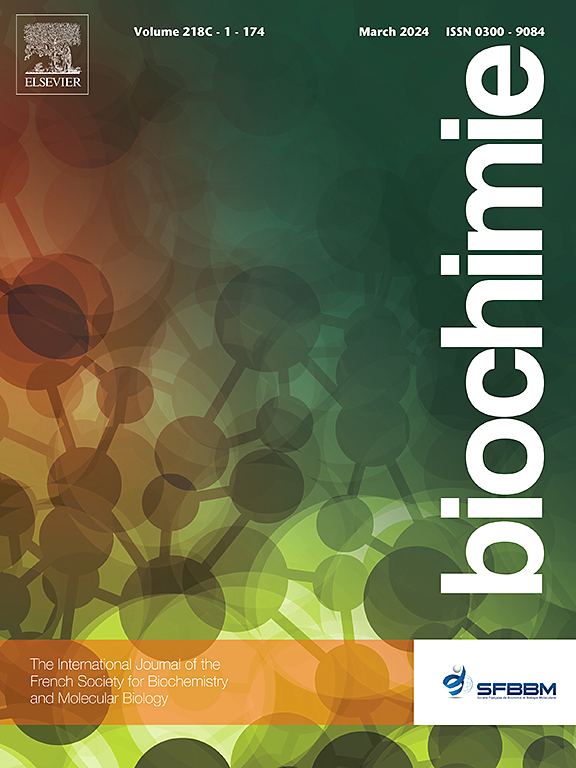Regulation and signaling of SNX10, a tumor suppressor in hepatocellular carcinoma
IF 3
3区 生物学
Q2 BIOCHEMISTRY & MOLECULAR BIOLOGY
引用次数: 0
Abstract
SNX10 is a protein belonging to the “Sorting Nexin” family, characterized by the presence of the PX phosphoinositide binding domain. SNX10 is involved in endosomal regulation and may act as a tumor suppressor in cancer, as it is underexpressed in a rat model of chemical hepatocarcinogenesis and in colon cancer. In colorectal carcinoma, SNX10 serves as a negative regulator of chaperone-mediated autophagy (CMA). However, recent studies have also indicated its pro-oncogenic properties in cancer development. In this study, we investigated the role of SNX10 in hepatocellular carcinoma (HCC), the cancer type responsible for the third highest number of cancer deaths worldwide. Our findings revealed that SNX10 expression is lower in HCC tumors than in healthy tissue in both patients and an animal model. Moreover, SNX10 expression is markedly reduced in HCC cell lines with mesenchymal traits when compared with epithelial traits cells, suggesting that decreased SNX10 expression is associated with disease progression. SNX10 negatively regulates LAMP2A and consequently CMA but positively regulates the CMA target proteins p21 and IκBα in HCC cells. It also downregulates AFP, BCL-2, and DKK1 transcription. Additionally, miR-30d and SNX10 exhibit an inverse relationship in HCC cells, with miR-30d identified as a negative regulator of SNX10 in this context. Through these mechanisms, SNX10 functions as a tumor suppressor by inhibiting proliferation, migration, invasion, and tumorigenesis of HCC.
肝癌肿瘤抑制因子SNX10的调控和信号转导。
SNX10是一种属于“排序连接蛋白”家族的蛋白,其特征是存在PX磷酸肌苷结合域。SNX10参与内体调节,并可能在癌症中作为肿瘤抑制因子,因为它在化学肝癌发生的大鼠模型和结肠癌中表达不足。在结直肠癌中,SNX10作为伴侣介导的自噬(CMA)的负调节因子。然而,最近的研究也表明其在癌症发展中的促癌特性。在这项研究中,我们研究了SNX10在肝细胞癌(HCC)中的作用,HCC是全球第三大癌症死亡类型。我们的研究结果显示,SNX10在HCC肿瘤中的表达低于在患者和动物模型中的健康组织。此外,与上皮性状细胞相比,具有间充质性状的HCC细胞系中SNX10表达显著降低,这表明SNX10表达降低与疾病进展有关。SNX10在HCC细胞中负调控LAMP2A从而调控CMA,而正调控CMA靶蛋白p21和i - κ b α。它也下调AFP、BCL-2和DKK1的转录。此外,miR-30d和SNX10在HCC细胞中表现出反比关系,在这种情况下miR-30d被鉴定为SNX10的负调节因子。通过这些机制,SNX10通过抑制HCC的增殖、迁移、侵袭和肿瘤发生发挥抑瘤作用。
本文章由计算机程序翻译,如有差异,请以英文原文为准。
求助全文
约1分钟内获得全文
求助全文
来源期刊

Biochimie
生物-生化与分子生物学
CiteScore
7.20
自引率
2.60%
发文量
219
审稿时长
40 days
期刊介绍:
Biochimie publishes original research articles, short communications, review articles, graphical reviews, mini-reviews, and hypotheses in the broad areas of biology, including biochemistry, enzymology, molecular and cell biology, metabolic regulation, genetics, immunology, microbiology, structural biology, genomics, proteomics, and molecular mechanisms of disease. Biochimie publishes exclusively in English.
Articles are subject to peer review, and must satisfy the requirements of originality, high scientific integrity and general interest to a broad range of readers. Submissions that are judged to be of sound scientific and technical quality but do not fully satisfy the requirements for publication in Biochimie may benefit from a transfer service to a more suitable journal within the same subject area.
 求助内容:
求助内容: 应助结果提醒方式:
应助结果提醒方式:


